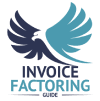
You don’t have to run a “seasonal business” to experience seasonality. Even slight yet predictable, revenue shifts at different times of the year are evidence of seasonality. Moreover, these peaks and valleys can significantly impact a small business’s ability to meet customer demand and keep the lights on. If your business is impacted by seasonality, or you’re worried it might be, these tips will help ensure you maximize your peak season and breeze through the slow season.
1. Know Your Swings
Review your historical data to identify the exact points of the year your business experiences a shift and how much shift occurs. If your company is too new to have historical data, review industry trends to better understand what to expect.
Once you understand how seasonality impacts your business, you can better predict things like how much cash you’ll need to have on hand, inventory requirements, staffing needs, and more. That way, you can avoid knee-jerk reactions later, keep costs lower, and boost profit.
2. Develop a Documented Budget
More than half of all businesses don’t create a formally documented budget, Clutch reports. However, most who create a budget stick to it and don’t overspend. That means simply mapping your finances out ahead of time is one of the single most important things you can do to ensure you have enough cash on hand for crucial expenses like payroll and inventory.
3. Run Cash Flow Projections Regularly

Many businesses focus solely on profit. However, eight in ten small business failures are tied directly to cash flow issues, the National Federation of Independent Business (NFIB) reports. The reason for this is simple. If you need inventory or to make payroll today, you need the money to do it today. It doesn’t matter if the money comes in a month from now.
Learn how to accurately predict cash flow or invest in software that will do it for you. This will ensure you can monitor it closely during slow periods so you can take proactive measures when it looks like you might run low on cash.
4. Avoid Debt
Two in five small businesses are more than $100,000 in debt, according to the latest Small Business Credit Survey. Nearly three-quarters have at least some debt. While not all debt is harmful, certain types of debt, such as high-interest loans and revolving credit carried month-to-month, can wind up being very expensive, make managing cash flow challenging, and can contribute to a cycle of debt that the business has difficulty climbing out of.
Avoid accruing debt whenever possible. If you’re already in debt, try to pay it off as quickly as possible or explore loan consolidation and alternatives that may make managing it easier.
5. Stockpile During Peak Season
Remember that a significant portion of the cash you bring in during peak season must last all year. Talk with a financial planner about the best ways to hold or invest your cash so that it grows when you don’t need it but remains available for you when you do.
6. Keep a Cushion
While cash flow forecasting and good budgeting will go a long way toward ensuring you don’t run out of cash, unplanned expenses or slow-paying customers may still create issues. Build a business savings account and pay a little toward it each week or month as if it were any other payable. Also, determine a minimum cash threshold for your primary account and set up alerts to ensure you’re notified if your balance dips below it. That way, you’re not surprised by a low balance and can adjust your spending or make other arrangements as needed.
7. Preserve Cash
Explore ways to stop or slow your cash outflows. For example:
- Hire seasonal employees for peak season
- Comparison shop for recurring expenses
- Ask vendors for early payment or bulk discounts
8. Diversify Your Offerings
Consider whether your business can create an additional revenue stream that will minimize the impact of the slow season. Subscription services may be ideal for some businesses. Others may find opportunities to add new services or products.
9. Keep Marketing
Businesses impacted by seasonality are often tempted to stop marketing efforts once their peak season concludes. However, it’s essential to keep interest going throughout the year. This will boost sales during the slow season and keep you top-of-mind as you move into peak season. Consider what special pricing or promotions will encourage more of your customers to take action.
10. Have a Backup Form of Funding Ready
Cash flow gaps may happen due to emergencies, sluggish receivables, or as your business ramps up for peak season, even if you do everything right. Businesses that are unprepared for this are often forced to seek out expensive emergency funding with unfavorable terms.
An option such as invoice factoring can work well here because it’s flexible and is not a loan. You’re simply selling your unpaid B2B invoices to a factoring company. The factoring company advances most of the invoice’s value immediately, which you can then spend on whatever your business needs most. When your customer pays their invoice, the factoring company sends you the remaining sum minus a small factoring fee.
You can get set up for factoring whenever you like and not use it or pay anything at all until you factor an invoice. That way, it’s always waiting in the background as a safeguard in case you need it.

Prepare for Business Seasonality with Invoice Factoring
Invoice Factoring Guide is happy to match you with a factoring company that’s knowledgeable about your industry and offers competitive rates. If you’d like to line up debt-free funding to ensure your business seasonality cash flow issues don’t become an issue, request a complimentary factoring rate quote.

About Invoice Factoring Guide
Related Articles
Get an instant funding estimate
Results are estimates based on the calculated rate and the total invoice amount provided.
Actual rates may vary.
Request a Factoring Rate Quote
PREFER TO TALK? Call us at 1-844-887-0300










